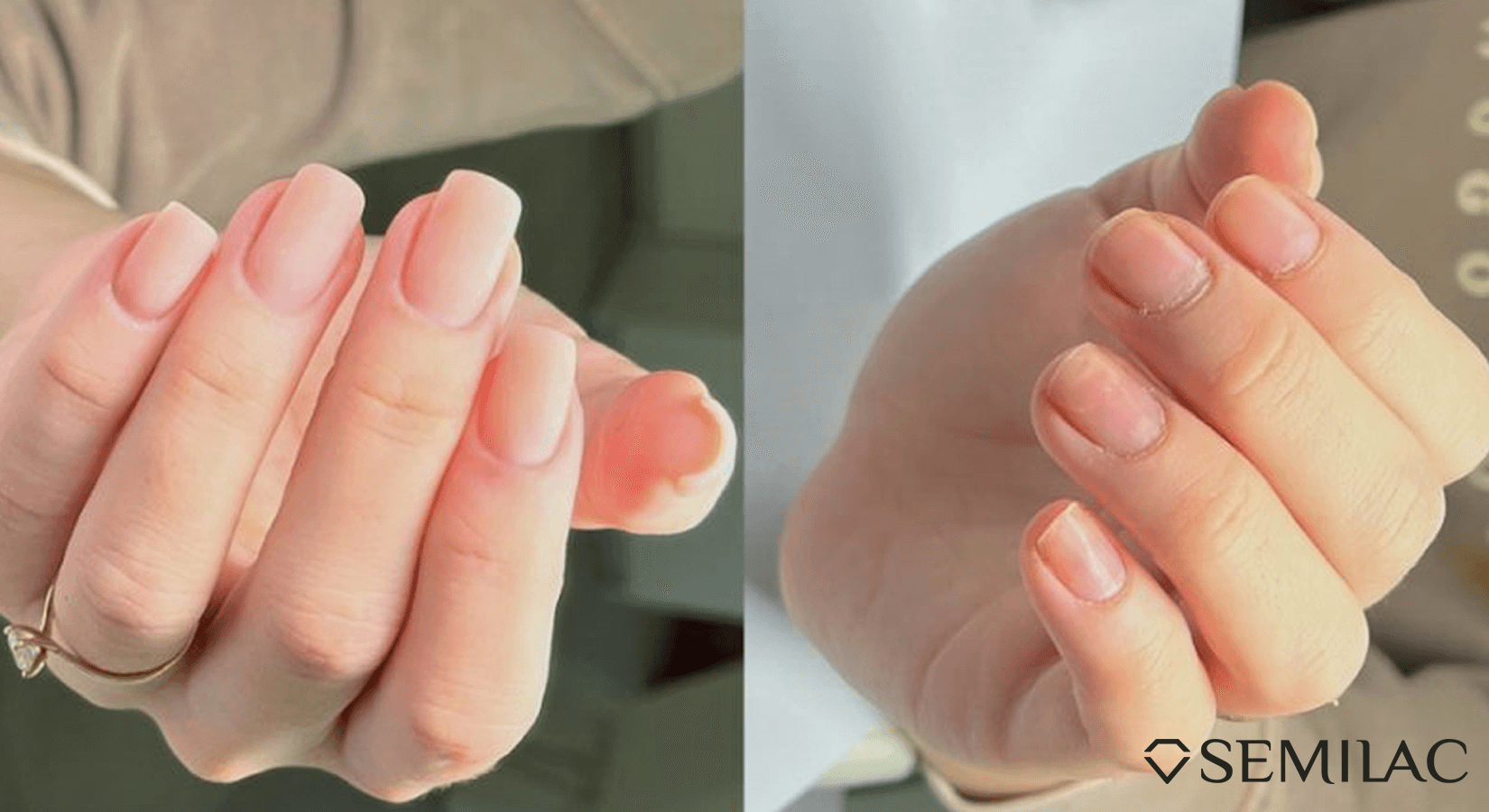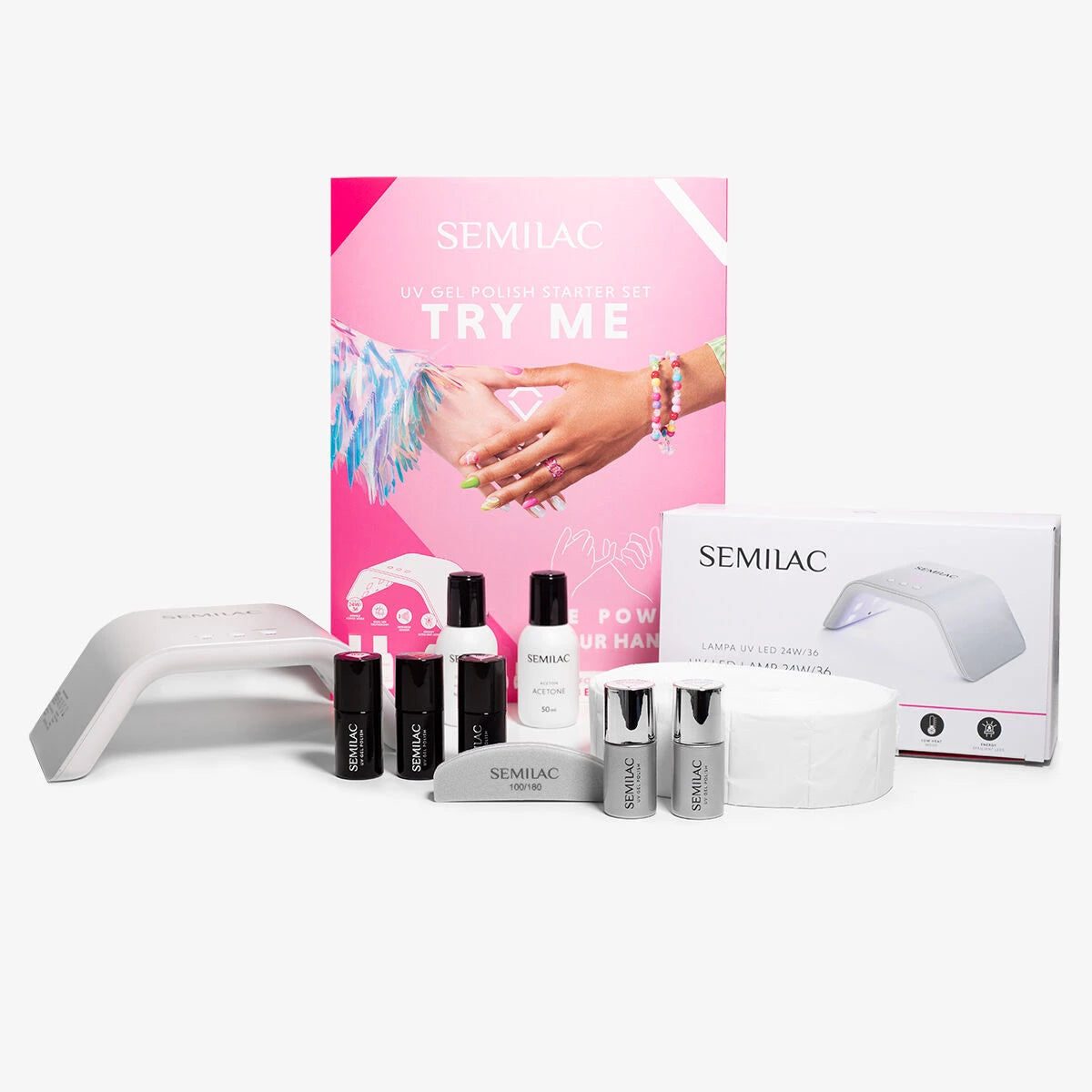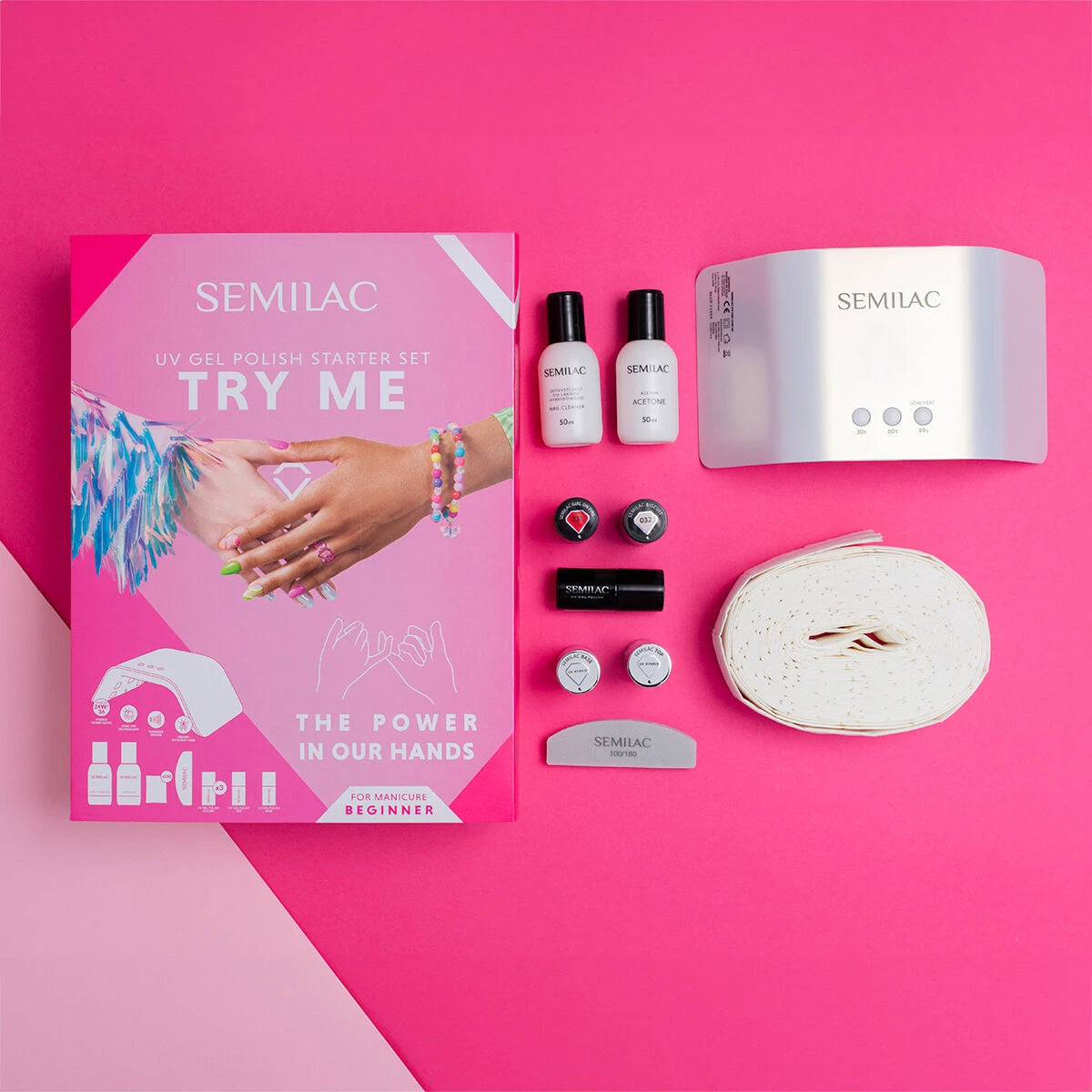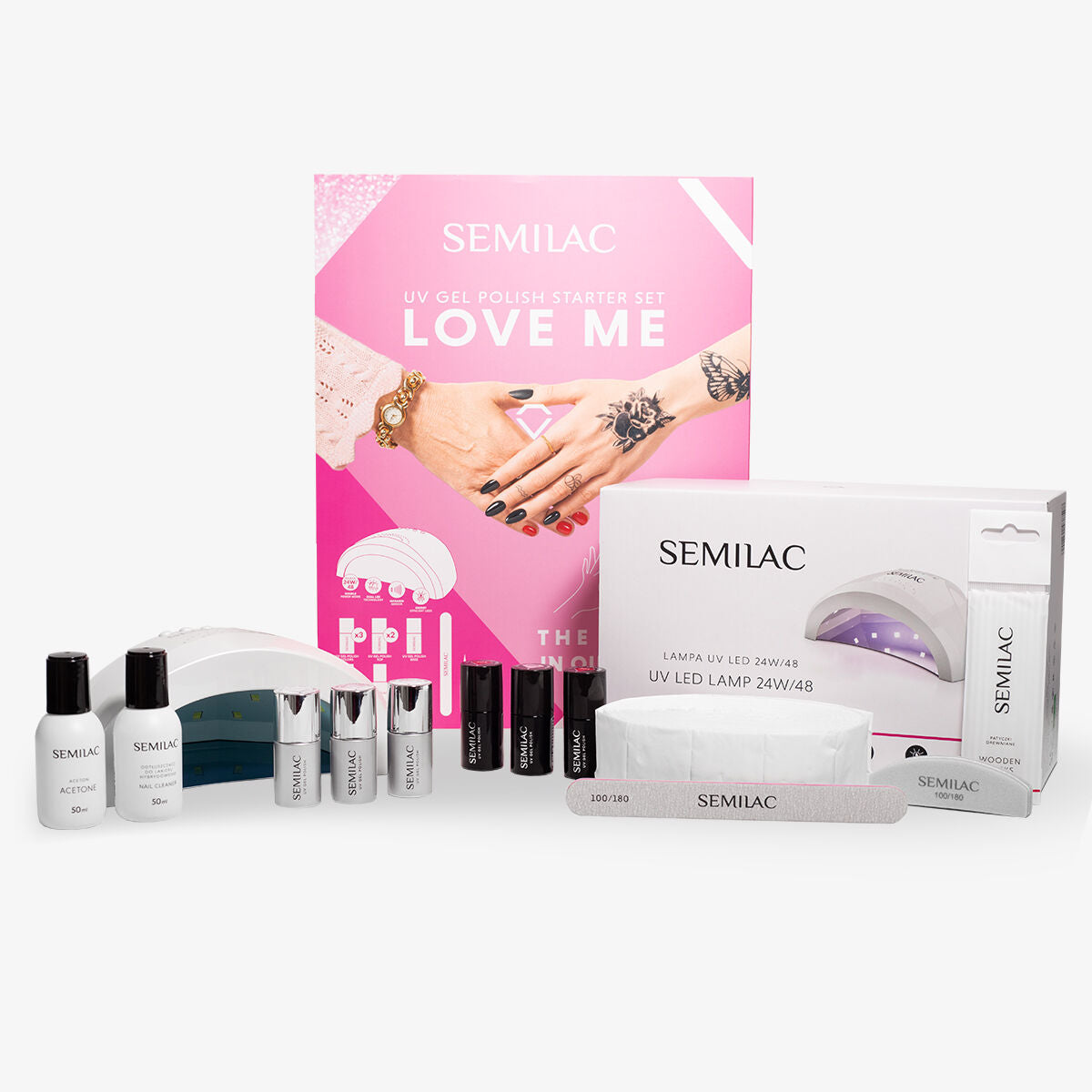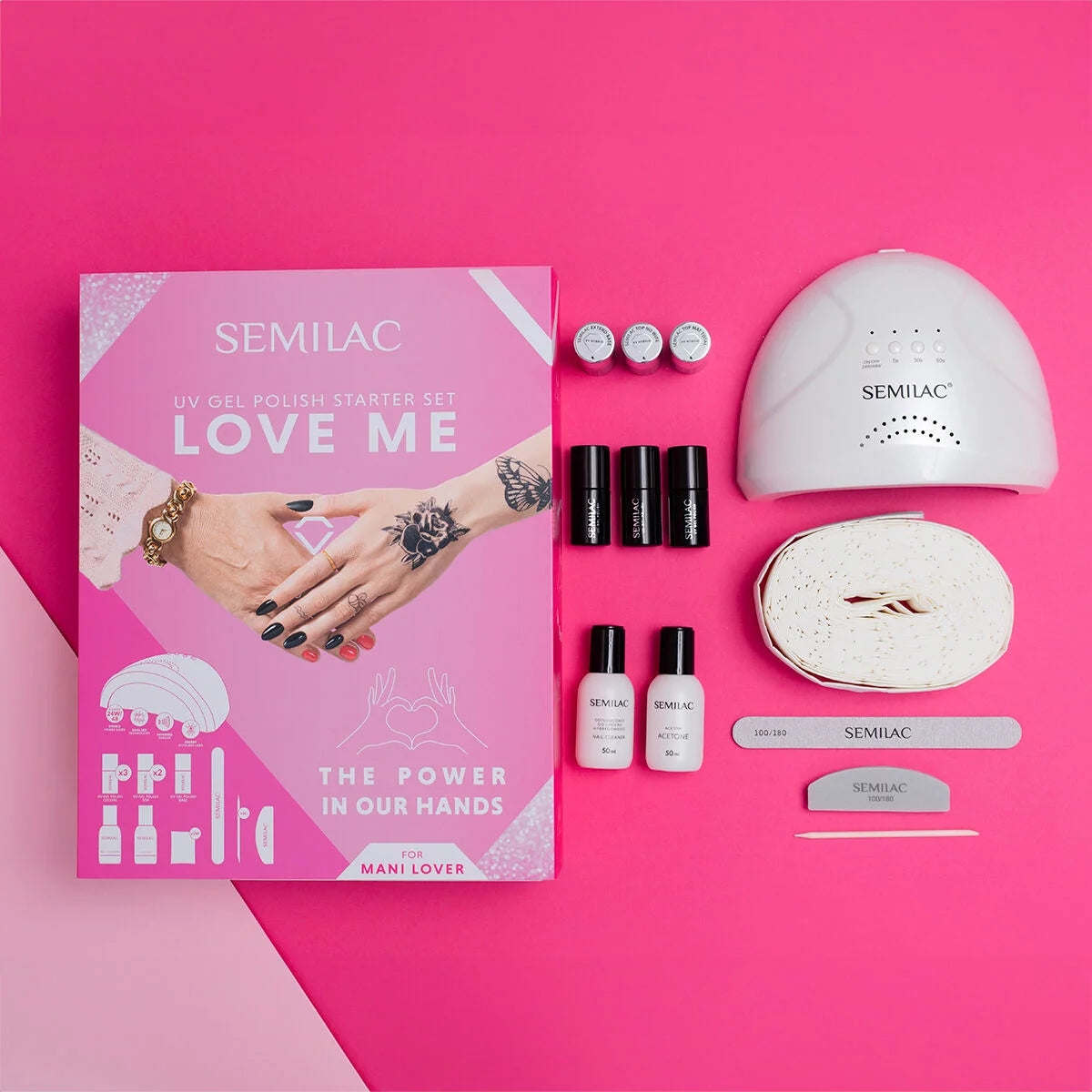Every woman who cares about her appearance knows how important a manicure is. It's no wonder that more and more women opt for long-lasting UV gel polish, which should look perfect for weeks. Is it always the case? Unfortunately, not. Sometimes, UV gel polish may crack, even though it should stay intact on the nails. In this article, we will answer the question of why UV gel polish cracks.
Uneven distribution of UV gel polish
The problem may arise when UV gel polishes are applied too thinly or unevenly. When the coverage with UV gel polish is uneven, areas with a thinner layer may be more prone to breakage and cracking. Therefore, it's essential to ensure an even distribution of UV gel polish across the entire nail surface.
Incorrect nail plate preparation
The cause sometimes lies in the preparation of the nail plate itself. Lack of proper buffing of natural nails or residue of oil on them can affect the poor adhesion of UV gel polish, resulting in cracking. It's also important to pay attention to the proper curing of the polish in a UV/LED lamp – both too short and too long curing times can negatively impact the structure and durability of the manicure.
Density of UV gel polish
Another potential reason is the improper consistency of UV gel polish. A too thick product will be harder to evenly spread and, consequently, more prone to creating tensions that can lead to cracks.
Cracking of UV gel polish can also be caused by bad daily habits and external mechanical loads. UV gel polish, though durable, is not indestructible, and impacts or strong pressure on particularly vulnerable areas (e.g., free edge) often lead to cracking.
The question often arises as to why UV gel polish cracks on nails immediately after application. Here, there can be various reasons – from improperly chosen products, application errors, to improper working conditions (e.g., humidity, temperature).
Causes of cracking in extended nails
When we decide to extend our nails, we expect them to look perfect and add a shine to our hands for a long time. Unfortunately, even in this case, there is a risk of cracking. Let's discover the reasons why even the most beautiful UV gel nails can disappoint us.
Improperly placed template
The basis of every well-done nail extension is a properly placed template. This is a crucial element that determines the shape and durability of the entire structure. If the template is improperly applied – too loose or asymmetrically – it can lead to unwanted tension in the nail structure. As a result, such uneven distribution of forces makes the nails more susceptible to cracking and breaking.
Overfiling of side edges
Just like with natural nails, excessive filing of the side edges of extended nails can weaken their structure. It's important to be cautious during the modeling process and not unnecessarily reduce their thickness on the sides. Optimal profiling will not only ensure an aesthetic appearance but also increase the resistance of extended nails to damage.
Incorrect construction – lack of stress line reinforcement
Proper reinforcement of the stress line, the place subjected to the greatest loads during daily activities, is crucial for the durability of extended nails. Strengthening this point helps distribute the forces acting on the nail, minimizing the risk of cracking. Insufficient reinforcement of this line, as well as improper nail construction – for example, too flat an extension – lead to the creation of a weak point that can result in cracking even with a small amount of pressure or impact.
Avoiding the above-mentioned mistakes requires practice, knowledge, and precision during the nail extension process. Taking care of each stage of application guarantees the durability and beauty of UV gel manicure. Remember that the right technique and following the recommendations of professionals are essential elements on the way to achieving stunning and healthy extended nails.

Causes of natural nail cracking
Everyone dreams of beautiful and healthy nails, which are the hallmark of well-groomed hands. Unfortunately, the problem of nail cracking makes the dream of a perfect manicure seem unrealistic to many. But why does it happen? Understanding the causes of this phenomenon is the first step toward acquiring strong and flexible nails that can withstand the challenges of daily life.
Nutrient deficiencies
Nails, like any other part of our body, need the right level of nutrients to be healthy and strong. Deficiencies in vitamins and minerals can contribute to the weakening of the nail plate, leading to its brittleness and cracking. Vitamins A, C, D, and E are especially important, as nails become dull and brittle without them. Biotin, also known as vitamin H or B7, is equally essential for maintaining strong nails.
Among minerals, zinc, iron, calcium, and copper play a crucial role. Calcium is responsible for the hardness and resistance of the nail plate, while iron is essential in the process of its construction. Zinc supports cell repair and reduces the risk of cracking, while copper helps increase nail flexibility. Additionally, we must remember the necessary unsaturated fatty acids (UFAs), which are vital for maintaining proper hydration levels.
Skin and nail diseases
Many people struggling with the problem of brittle nails are unaware that its cause may be related to their health. Diseases such as psoriasis and fungal infections can directly impact the condition of the nails. Psoriasis often manifests as changes on the nail plate, such as indentations or irregular texture, while fungal infections cause thickening, discoloration, and, consequently, cracking.
External factors
Nail cracking often results from the action of external factors that we often overlook. Nail biting is an unsightly habit and one of the main enemies of strong nails – it damages their structure and accelerates the cracking process. Similar effects can be caused by direct contact with strong detergents – hence, always remember to wear protective gloves during cleaning.
Proper nail care is of great importance. Excessive filing of natural nails on the sides, i.e., filing the side edges, weakens the nail structure, leading to breakage and cracking. Another factor is mechanical trauma – impacts or crushing can cause pain and long-term changes in the nail structure.
Understanding these factors is fundamental to the path to healthy and strong nails. Both natural and extended nails are susceptible to cracking due to various reasons, such as nutrient deficiencies, improper care, or errors in the UV gel polish application process. Using appropriate techniques and products, careful care, and adherence to a diet rich in vitamins and minerals can significantly reduce the risk of nail cracking. Understanding the impact of external factors and skin and nail diseases on the condition of the nail plate, as well as avoiding mechanical injuries, are crucial for maintaining healthy and beautiful nails.
Remember that attention to detail is the secret to long-term beauty, and healthy nails are a matter of aesthetics and comfort in everyday life

